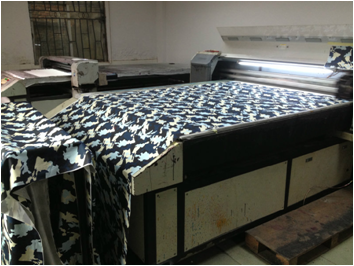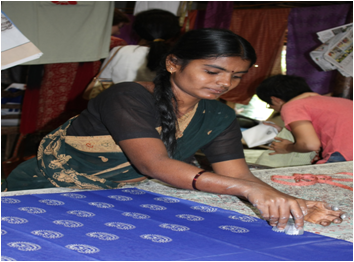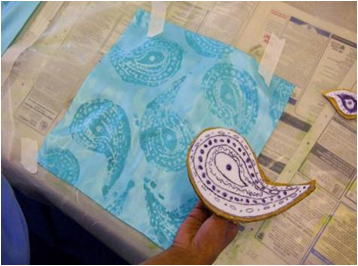Origin -
Early mention of Jamdani was in the book `Arthashashtra’ by an ancient economist, Kautilya, dating back to 300 AD. The golden period of Dhaka muslin or Dhakia began with patronage from the Mughals Since then the demand for jamdani muslin grew at home and abroad. Muslin was used for a variety of things and the muslin was then as light as a feather. During the English rule there was a post created and it was the duty of a Daroga to keep a sharp eye at every stage of production. Mulmul was collected and sent overseas.
Patronage -
According to an account from the middle of the 19th century, white muslin with floral Jamdani cotton Saree designs were used by the rulers and nawabs of Delhi, Lucknow, Nepal and Murshidabad. There were a number of factors behind the decline of the jamdani and muslin industry in the middle of the 19th century. The use of machinery in the English textile industry, import of cheaper yarns from England and lack of patronage from the Mughal Emperors and the aristocracy. After the Partition of Bengal in 1947, official patronage was extended to the jamdani silk cotton saree industry. UNESCO has declared it be a heritage art.
Quality -
The fineness of muslin cloth used to depend usually on the art of making yarns. The most appropriate time for making yarns was is said in the early morning, as the air then carried moisture. For making yarns weavers needed a bamboo basket, a shell and a stone cup. They used corn, rice or barley for starch. Before making Jamdani Sarees designs they used to dye the yarn and starch it. Coarse yarns are used for designs to make the motifs rise above the fabric. Originally, the motifs were made on gray fabric. Later on fabrics of other colours were also used. In the 1960s, jamdani work on red fabric became very popular. The Victoria and Albert Museum of London has a fine collection of jamdani work in white on white fabric.
Styles of Jamdani Saree:
Jamdani Saree is a unique type of weaving done by hand loom in few areas in Bangladesh. It produces a beautiful, shimmering cloth with various historical patterned on it. This is a region-specific craft practiced in a few rural areas in Bangladesh specially in Narayongonj and Tangail is famous for Jamdani saree, Jamdani has been the most common fabric product of this handicraft industry since long time, is widely popular in all over Bangladesh and in recent time it’s getting more recognition and increasing the demand worldwide.
Designs :
The distinct jamdani work is the geometric design. The expert weavers do not need to draw the design on paper they can do it blind folded! Present day handloom Jamdani cotton sarees have designs of rose, jasmine or lotus. Efforts are underway to revive traditional jamdani sarees price designs. Butidar, meant a jamdani with small flowers diapered on the fabric. Tersa jamdani, if flowers are arranged in a reclining position. It is not necessary that these designs are made of flowers only. There can be designs with peacocks and leaves or creepers. Jalar, if the design covers the entire field of the saree. Fulwar if it has flowers. If it has spots, it is called Duria and Belwari if it has golden borders. However, the long tradition of jamdani craftsmanship is still intact. The jamdani silk saree is beautiful and has patronage from the saree lovers. Shatika itself has an impressive repertoire of these sarees, the jamdani cotton sarees are loved by the woman for their lightweight and the delicate weave.





